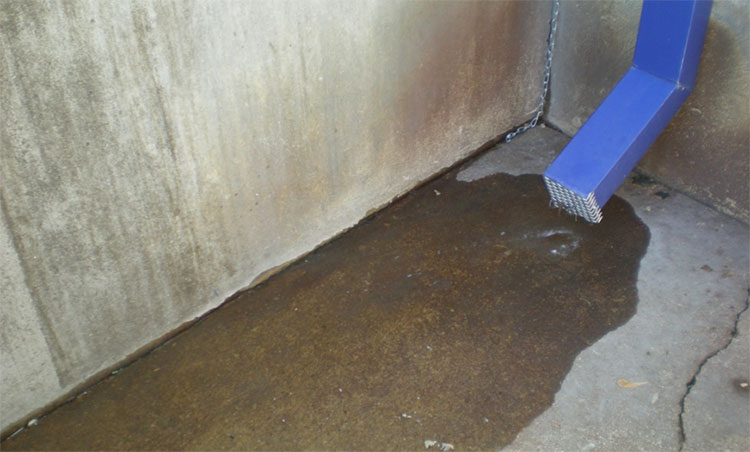
Taking a closer look at a drainage issue such as this may help solve pest problems.
Photo: Mark Sheperdigian
At first blush, it may not appear that too much is wrong with this construction, but if we think about what we are seeing, several issues come into focus.
Right off the bat, most trained pest management professionals would note that this is an inappropriate place to deposit rainwater. The spout should empty into a storm sewer or drain tile; alternatively, the spout should be extended to release the water onto the ground beyond the concrete.
Observation reveals that the wet spot forms a pattern on dry pavement. The downspout must be clogged, leading to trapped rainwater seeping out slowly, even after the rain has stopped and the pavement has dried. The accumulated organic matter that clogs the downspout can breed flies and occasional invaders. The water spot attracts rodents and other animals seeking water. The extended flow of water leaks into the joint between the wall and the slab, generating an excellent breeding site for a variety of pests.
There is a screen over the end of the spout that causes the problem, but it was put there supposedly to stop rodents from gaining access to the roof. Unless they are having trouble with rodents getting on the roof, they would do well to remove it — or at least have it cleaned regularly.
Whatever they choose, the goal is to get the rainwater away from the building to eliminate the attractive conditions and breeding site to keep rodents away.
Contributor Mark Sheperdigian, BCE, can be reached at shep@rosepest.com.
Leave A Comment